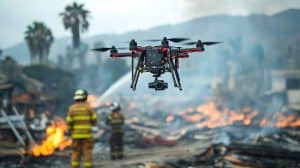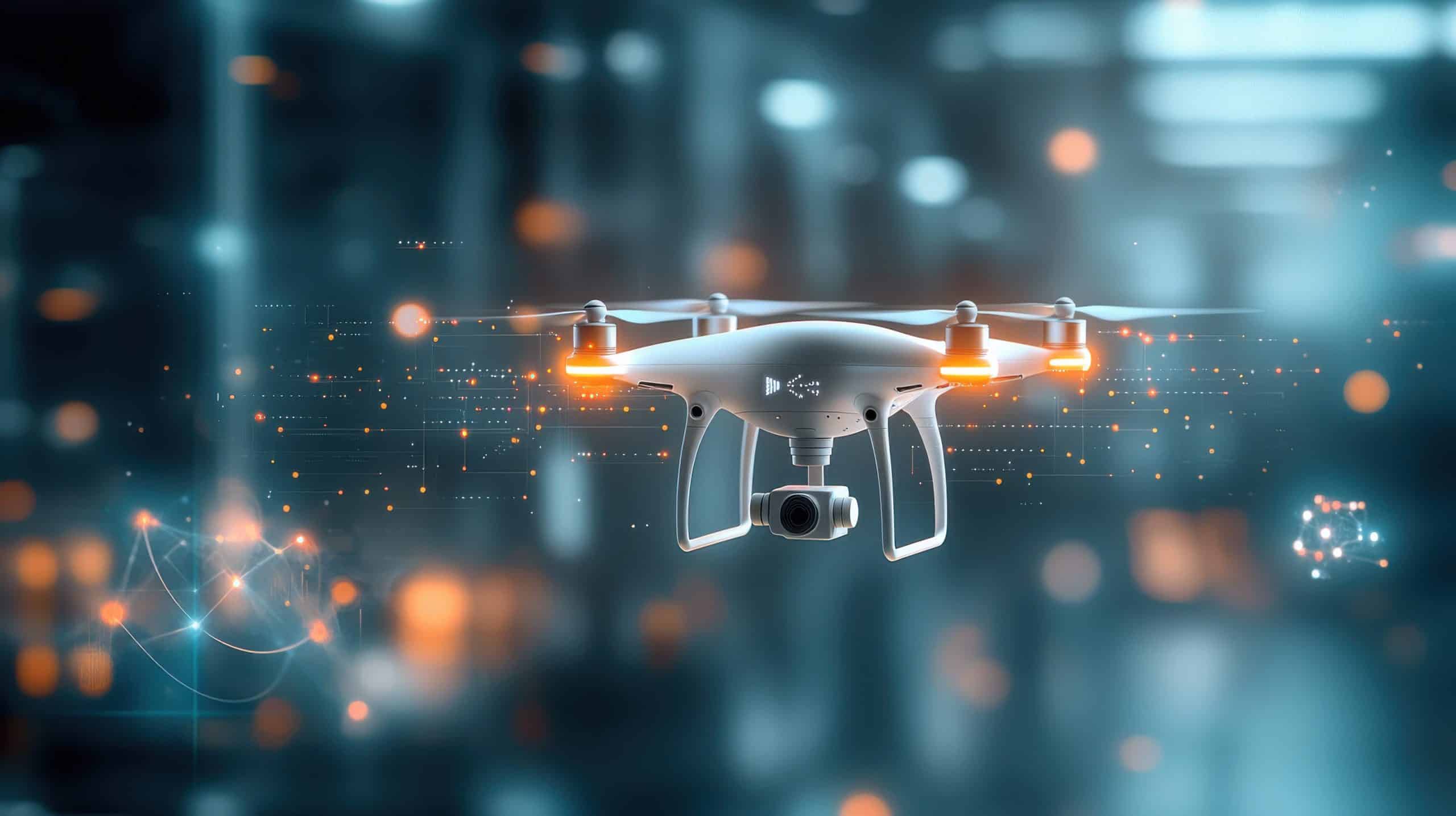Challenges of Traditional UAV Video Streaming
Unmanned Aerial Vehicles (UAVs) have changed the game for surveillance activities with drones’ unprecedented visibility into hard-to-access areas. However, traditional UAV surveillance systems face significant challenges, particularly in video streaming. Factors like bandwidth limitations, high latency, and inefficient data transmission can be barriers to real-time analysis. It is difficult for conventional streaming methods to deliver high-quality video over long distances, which makes it complicated for military and defense contractors to gain actionable insights in time-sensitive situations.
In addition, UAV surveillance drones generate massive amounts of video data, which requires rapid processing in order to be useful. Without intelligent analysis, the sheer volume of raw footage can overwhelm networks, causing delays in decision-making.
How Intelligent Video Processing Transforms UAV Surveillance
AI-powered video surveillance addresses these UAV challenges via the use of intelligent video processing. AI-based video streaming works with:
Smart Compression Algorithms: AI dynamically adjusts compression rates based on available bandwidth. This ensures high-quality video while minimizing data loss. For example, during disaster response operations, AI-driven compression enables real-time video streaming even in areas with weak connectivity, allowing first responders to assess damage efficiently.
Edge Computing: By processing video data directly on UAV surveillance drones, edge computing solutions with AI integration reduce the need to transmit large files, cutting down latency and saving bandwidth. In military reconnaissance missions, edge AI allows UAVs to detect enemy movement, classify threats instantly, and transmit only essential data back to command centers.
Real-Time Video Analytics: AI can identify critical objects, detect anomalies, and instantly classify threats. For example, AI-powered UAVs can differentiate between wildlife and unauthorized personnel, reducing false alarms at the border.
Predictive Analytics and Automation: AI can analyze past surveillance footage to predict potential security breaches or maintenance needs. In defense operations, AI-enabled UAVs can detect patterns in enemy movements, predicting potential attack strategies and allowing proactive defense measures to be taken in real-time.
Benefits of AI-Powered UAV Surveillance
- Improved Situational Awareness: AI-enhanced analytics convert raw footage into structured insights, which allows drone surveillance teams to quickly assess and respond to potential threats.
- Faster Decision-Making: Real-time analytics reduce response times, critical for applications such as military operations, disaster response, and law enforcement.
- Operational Efficiency: AI-driven compression and processing reduce the strain on communication infrastructure, which allows for longer mission time.
- Cost Reduction: Optimized video transmission lowers data storage and bandwidth costs.
AI-Enhanced Drone Surveillance Across Industries
AI-powered UAV surveillance systems are not limited to defense applications; they also play a critical role across multiple industries. AI-based drones can assess damage, locate survivors, and coordinate disaster recovery activities with minimal delay.
In infrastructure inspection, AI-driven UAVs can detect structural weaknesses in bridges, pipelines, and power grids before they lead to catastrophic failures. Industry reports indicate that commercial drone usage is expected to triple over the next five years, significantly impacting sectors like infrastructure inspection.
Border security and law enforcement agencies increasingly rely on AI-powered UAV surveillance systems to monitor large areas efficiently, identify potential threats, and track suspicious activities. A study by Deloitte found that smart technologies such as AI could help cities reduce crime by 30-40% and shorten response times for emergency services by 20-35%.
Similarly, industrial monitoring now uses AI-driven UAVs securing oil rigs, overseeing vast agricultural lands, and automating perimeter security for large facilities. In the energy sector, drone surveillance platforms are projected to grow significantly, with the market size expected to reach $1,258.6 million by 2033.

Future of AI in UAV Surveillance
Some emerging trends to watch in the future of AI in UAV surveillance systems:
Autonomous UAV Operations: AI will enable UAVs to make independent decisions, reducing the need for human intervention. Fully autonomous UAVs could operate in high-risk environments such as battlefields or disaster zones without requiring manual work.
Advanced Object Recognition: Future AI models will enhance accuracy in detecting and identifying targets, from vehicles to unauthorized personnel. AI-driven facial and behavioral recognition will further improve the ability to distinguish between friendly and hostile entities.
5G and AI Synergy: The combination of AI-powered surveillance with 5G connectivity will further reduce latency and improve data transmission efficiency. With ultra-fast network speeds, UAVs will be able to relay high-resolution video in real-time with minimal lag, allowing for instant decision-making in mission-critical scenarios.
Swarm Intelligence and Coordination: The next phase of AI in UAV surveillance involves multi-drone collaboration, where multiple UAVs work together in a synchronized manner to cover vast areas efficiently. This will enhance border security, large-scale military operations, and monitoring urban areas.
Ethical and Privacy Considerations: As AI surveillance expands, regulations and ethics will play a role in balancing security with privacy rights. Governments and defense organizations will need to establish guidelines to ensure responsible AI usage.
How Maris-Tech is Leading the AI-Accelerated UAV Revolution
Maris-Tech is at the forefront of AI-powered UAV innovation, developing cutting-edge solutions that enhance video streaming and situational awareness. Our AI-driven video processing technology ensures low-latency, high-resolution video streaming for real-time operations.
By leveraging edge AI computing, Maris-Tech minimizes bandwidth consumption while maximizing intelligence extraction, allowing for faster and more efficient data processing. Our solutions are designed to support secure and scalable UAV surveillance systems tailored for military, defense, homeland security, and critical infrastructure monitoring.
Through continuous innovation and development, Maris-Tech is committed to pushing the boundaries of AI-powered UAV surveillance technology, ensuring that our clients remain at the forefront of modern defense operations.
Ready to enhance your UAV surveillance drone operations with AI-powered technology? Contact Maris-Tech today to learn more about our advanced AI-driven video streaming solutions and how we can improve your surveillance capabilities.


